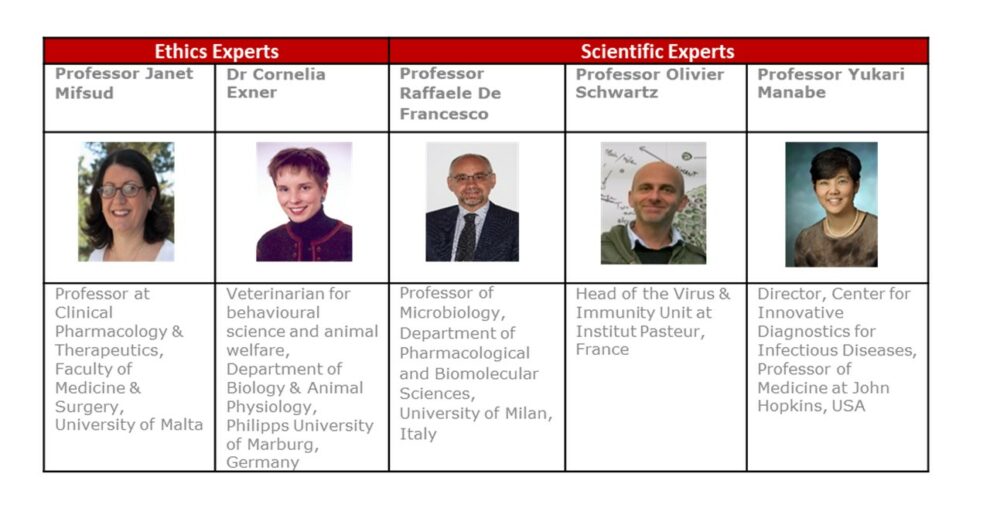October 19th 2023
About CARE’S Scientific and Ethics Advisory Board
About CARE’S Scientific and Ethics Advisory Board
What is the SEAB?
SEAB stands for Scientific and Ethics Advisory Board. It is an independent group, appointed by the CARE Steering Committee (SCOM) that can provide objective feedback on the activities and plans of the consortium in order to ensure its obligations are fulfilled.
Who is in the SEAB?
It is a group comprising two ethics and three scientific experts. Of the scientific experts below, Professor Manabe is also a clinician.

What role does the SEAB play?
The SEAB’s role is to advise the project as a whole on scientific and technical development as well as ethics aspects, to support with decision making. They are expected to meet annually, which takes place during the CARE Annual Meeting. The group are also invited by the CARE SCOM to provide non-binding feedback and advice to the CARE General Assembly and CARE SCOM at this time.
We asked some of the SEAB members for their views about CARE’s progress, plans and relevance to society today
How relevant is CARE today?
Prof. Janet Mifsud (JM): The subject may not be as urgent as it was when it was originally funded, however the unique collaborations, insights and technologies developed over these last few years in the CARE project have a much wider and important impact in the scientific arena. CARE also has the capacity to act as a fulcrum in the long-term visibility and foresight of what is being developed and researched for future pandemics.
Prof Yuka Manabe (YM): CARE could become a model for accelerating pandemic response and preparedness; academia has many innovative ideas that can be accelerated to impactful products if paired with industry partners who understand quality, reproducibility and commercialization.
Prof. Raffaele De Francesco (RDF): The World Health Organization (WHO) declared COVID-19 to be no longer a global health emergency in May 2023 however, the attention paid to COVID-19 should remain very high. New variants of the virus are constantly emerging, and some of these variants may be more transmissible or severe than previous variants. In this scenario, the activities of the Care consortium remain highly relevant.
What are your observations of the programme over the past three years?
JM: It is clear that there has been a great deal of progress in CARE since inception. We have observed greater data sharing, interaction and communication between the work packages. While there are less lead compounds than anticipated in CARE, the repurposing work and working with compounds from outside the consortium and combination drugs offers promising alternative strategies.
YM: after a predictable period of framework development for how to engage, there has been measurable growth of CARE with increasing productivity and better cross fertilization across work packages.
RDF: CARE has made significant progress towards its goal to develop new drugs to fight Covid-19 and future pandemics, through building a very strong network that has the potential to make a major impact. The Consortium has shown how academia and industry can work together effectively to accelerate drug discovery and development.
What hopes do you have for the remaining period of CARE?
JM: CARE is offering very interesting integrative work in the systems biology approach from the molecular to clinical approaches which will be key and may have a great impact in the clinical trial developments. In the last few years of CARE, there is very interesting ancillary work planned such as the interactions related to the regulatory aspect with EMA with data from GDPR and ethics studies. The consortium systems modelling is also novel and may have a wider impact on other consortium and such IMI funding models. In my opinion this should be of interest to the Innovative Health Initiative (IHI) Steering Committee for to enable CARE learnings to be applied or adapted for other viral work.
YM: I hope that the funders continue to realize the value of seeing the collaboration through and considering how this vibrant network can be leveraged for future work. There have been many basic science discoveries in addition to novel and robust pipelines built to test new compounds. Expanding the work from just Europe to low- and middle-income countries in future iterations would also be welcome.
RDF: I hope and expect to see additional groundbreaking discoveries as well as substantial progress of existing candidates, eventually leading to the development of new important therapeutic and preventive agents.
